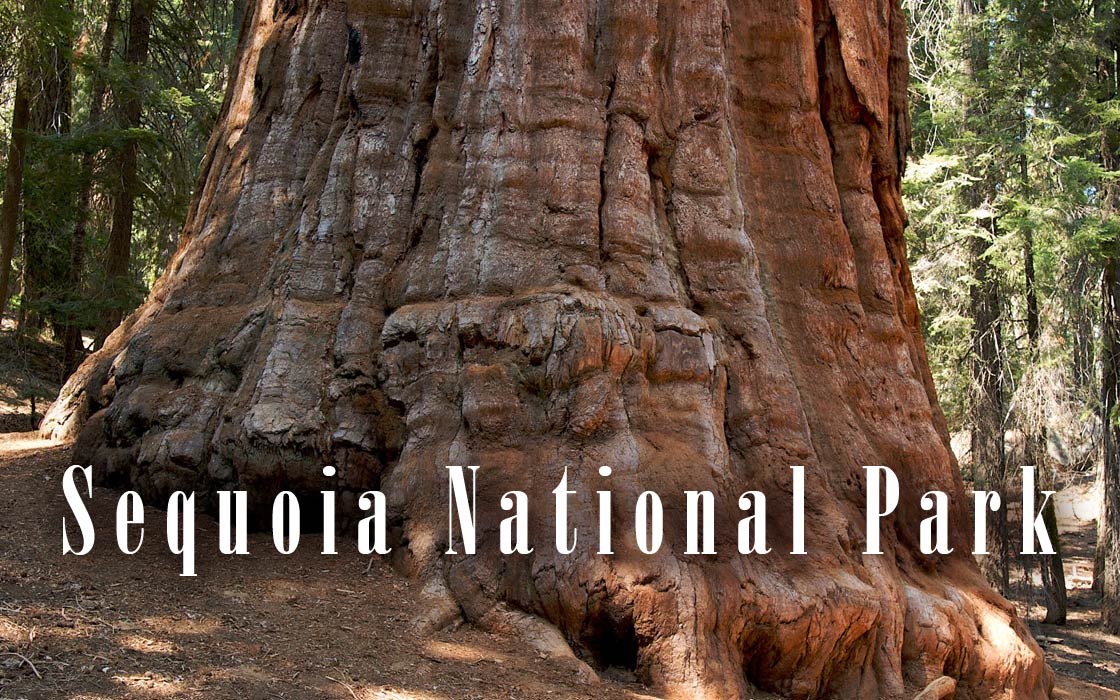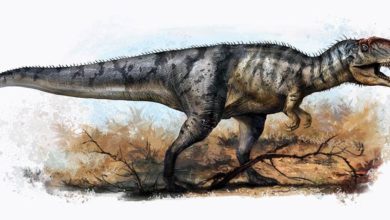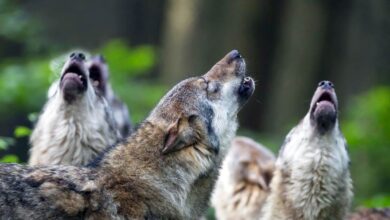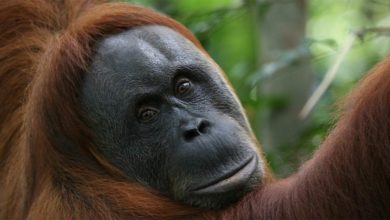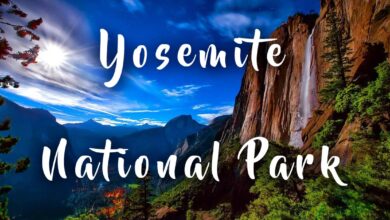Sequoia National Park – Discovering the Beauty and Diversity
Sequoia National Park is a breathtaking wonderland nestled in the southern Sierra Nevada mountains of central California. Here, visitors are transported to a world of giant trees that tower over 250 feet tall, mist-shrouded valleys, and towering peaks that stretch towards the sky. It is a place where nature reigns supreme, where wildlife roams freely and where visitors can experience the breathtaking beauty of one of the largest living organisms on earth. From the mighty General Sherman Tree, which is the largest tree in the world by volume, to the towering Mount Whitney, which is the highest peak in the contiguous United States, Sequoia National Park is a marvel of natural beauty that truly must be seen to be believed.
Sequoia National Park is a national park in California, United States. It is located in the southern Sierra Nevada, east of Visalia. The park is known for its giant sequoia trees, some of which are among the largest and oldest living organisms on Earth. The park also features deep canyons, rugged foothills, and high peaks, as well as a variety of wildlife, including black bears, deer, and bighorn sheep. The park is a popular destination for hiking, camping, and sightseeing, and it also offers a variety of educational and interpretive programs throughout the year. The park is open all year round, although some facilities and roads may be closed due to snow in the winter.
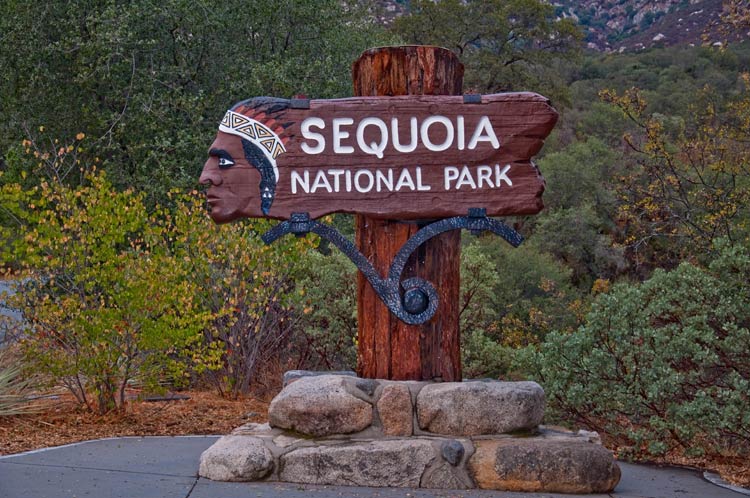
Location
Sequoia National Park is located in the southern Sierra Nevada mountain range in California, United States. It is situated east of Visalia and spans over 1,635 km2 (404,063 acres). The park is bordered by Kings Canyon National Park to the north, and is approximately a 4-5 hour drive from major California cities like Los Angeles and San Francisco. The park is easily accessible by car, with several main roads leading into the park, including the Generals Highway, which connects the park to the nearby towns of Three Rivers and Ash Mountain.
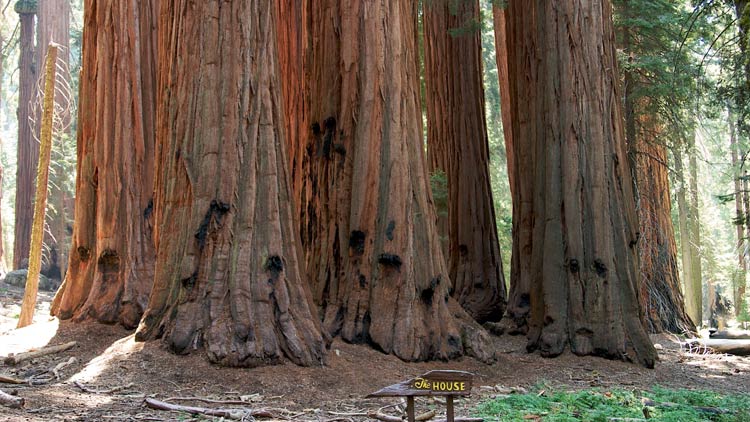
Basic Facts About Sequoia National Park
Sequoia National Park is located in the southern Sierra Nevada mountains in central California, USA. It covers an area of 404,063 hectares (1,635 square miles) and was established in 1890 as the second national park in the United States.
The park is known for its giant sequoia trees, which are some of the largest living organisms on earth, with some trees over 3,000 years old. The largest tree in the world by volume, the General Sherman Tree, can be found in Sequoia National Park and has a volume of over 1,487.6 cubic meters (52,508 cubic feet).
Sequoia National Park is also home to Mount Whitney, the highest peak in the contiguous United States, which stands at 4,421 meters (14,505 feet) above sea level. Other notable natural features in the park include Crystal Cave, the Giant Forest, and the Sierra Nevada bighorn sheep.
Over 200 species of birds, 60 species of mammals, and many reptiles and amphibians can be found in the park. There are also many hiking trails available, ranging from easy nature walks to strenuous backcountry trails.
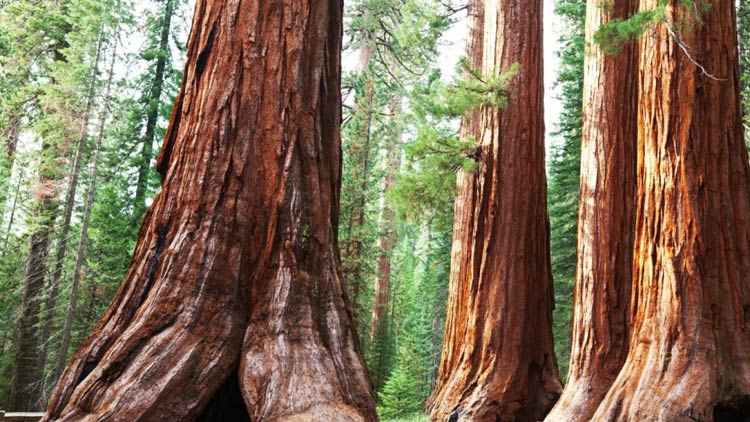
History and name of the Park
Sequoia National Park was established on September 25, 1890, making it the second national park in the United States after Yellowstone. The park was created to protect the giant sequoia trees, which are some of the largest and oldest living organisms on Earth.
The park was originally named “Sequoia National Park,” after the Sequoya (also spelled Sequoia), the man who developed the Cherokee alphabet. The park was later renamed “General Grant National Park” in honor of Ulysses S. Grant, the 18th President of the United States and a Union General during the American Civil War. In 1940, the park’s name was changed back to “Sequoia National Park” to reflect the primary focus on the giant sequoia trees.
The park is home to several groves of giant sequoias, including the General Sherman Tree, the largest living tree on Earth by volume. The park also contains the highest point in the contiguous United States, Mount Whitney, which is 14,505 feet (4,421 m) above sea level.
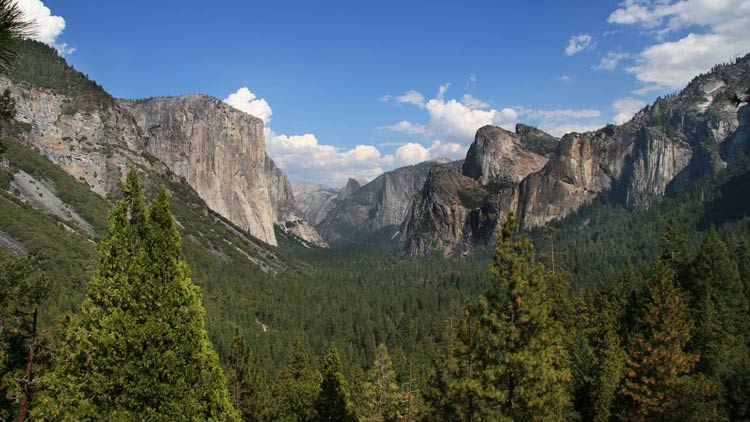
Geography
Sequoia National Park is located in the southern Sierra Nevada mountain range in California, USA. The park covers an area of 404,063 acres and is bordered by Kings Canyon National Park to the north. The park is divided into two main regions: the foothills and the high Sierra.
The foothills region, located at the park’s southern end, is characterized by its rolling hills, oak woodlands, and chaparral vegetation. This area is also home to several groves of giant sequoias, including the Giant Forest and Redwood Mountain Grove.
The high Sierra region, located at the park’s northern end, is characterized by its rugged mountains, granite cliffs, and alpine meadows. This area is also home to several peaks, including Mount Whitney, which is the highest peak in the contiguous United States. The high Sierra region also has a vast network of backcountry trails, offering great opportunities for hiking, backpacking, and mountaineering.
The park’s central region is a transition between the foothills and the high Sierra, and it is characterized by its Lodgepole Pine Forest, which is a dense forest of Lodgepole Pine Trees. This area is also home to several rivers, including the Kaweah River, which is the main river running through the park.
The park’s topography is diverse, including high peaks, deep canyons, lush meadows, and steep granite cliffs. The park has a Mediterranean-like climate, with hot, dry summers and mild, wet winters. The park experiences a wide range of temperatures and weather conditions, and visitors should be prepared for extreme heat and cold, as well as sudden storms.
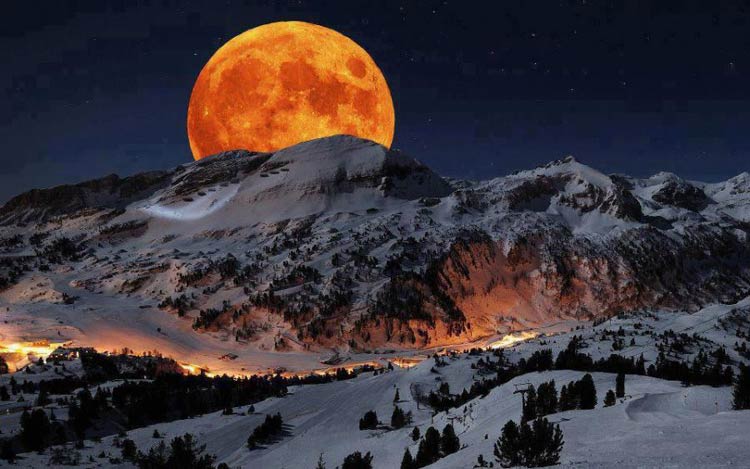
Geology
The geology of Sequoia National Park is primarily composed of granite and metamorphic rock, with some areas of volcanic rock. The park’s granite is some of the oldest in the Sierra Nevada mountain range, dating back to over 100 million years ago. The granite has been shaped and sculpted by erosion, creating the park’s rugged peaks, deep canyons, and steep cliffs.
The park is also home to several fault zones, including the Western Divide Fault, which is a major fault that runs through the park and has played a role in shaping the park’s topography. The park’s geology also includes several types of metamorphic rock, including schist, which is a type of rock that has been altered by heat and pressure.
The park’s caves, including Crystal and Boyden caves, were formed by the action of water on limestone rock over millions of years. The water has dissolved the rock and created underground channels, which have then been decorated by minerals, such as calcite, that were carried by the water.
The park’s geology also includes some volcanic rock, which is found in the park’s southern region. This rock is the result of volcanic eruptions that occurred in the area around 12-14 million years ago.
The park’s geology is complex and diverse, providing a natural laboratory for the study of geologic processes and history. Visitors can see the effects of erosion, faulting, and metamorphism in the park’s landscapes, as well as in the underground caves.
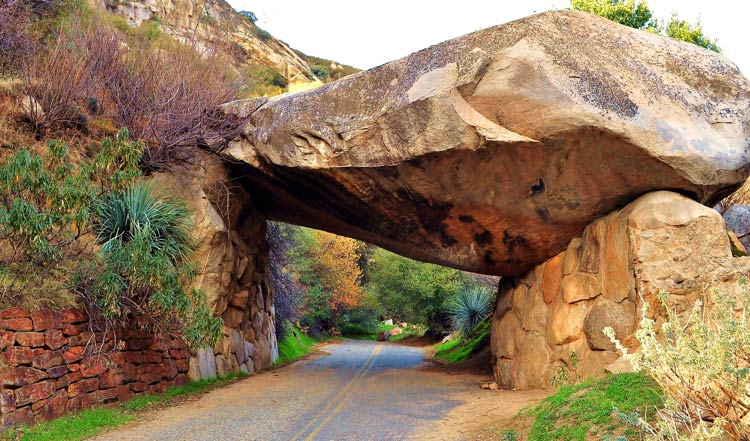
Landscapes
Mountains in the Park
Sequoia National Park is located in the southern Sierra Nevada mountain range, which is known for its rugged and diverse terrain. The park is home to several notable peaks and mountain ranges, including:
- The Great Western Divide
A mountain range that runs through the center of the park, with peaks that reach over 13,000 feet (3,962 m) feet in elevation. - The Kaweah Range
A mountain range located on the park’s western boundary, with peaks that reach over 13,000 feet in elevation. - The Monarch Divide
A mountain range located on the park’s eastern boundary, with peaks that reach over 12,000 feet in elevation. - Mount Whitney
The highest point in the contiguous United States at 14,505 feet (4,421 m) above sea level. - Alta Peak: A mountain located in the park’s Mineral King area, with an elevation of 12,441 feet (3,793 m).
- Eagle Scout Peak
A mountain located in the park’s Mineral King area, with an elevation of 12,005 feet (3,659 m). - Mount Sill
A mountain located in the park’s Mineral King area, with an elevation of 14,159 ft (4,316 m).
All of these mountains are popular for backpacking, hiking and climbing with permit.
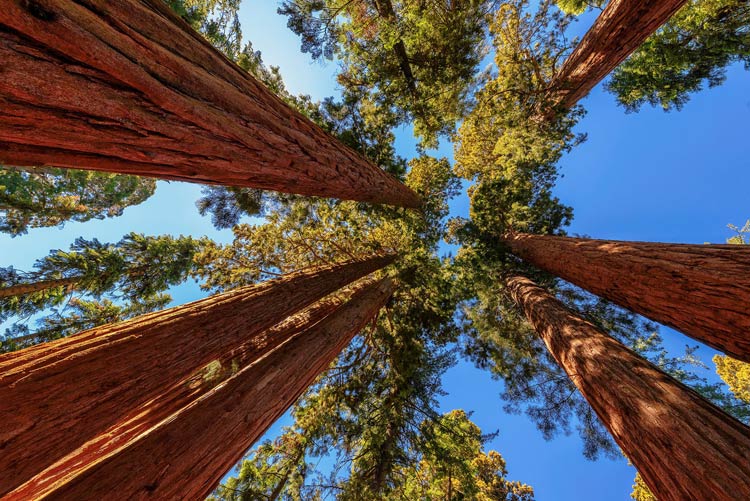
Passes, gorges and canyons in the Park
Sequoia National Park is home to several notable passes, gorges and canyons, including:
- Mineral King
A valley located in the park’s southern region, known for its picturesque alpine meadows and hiking trails. - Moro Rock
A granite dome located in the park’s Giant Forest area, that offers a panoramic view of the surrounding landscape. - Crescent Meadow
A lush meadow located in the park’s Giant Forest area, known for its wildflowers and wildlife viewing opportunities. - Tokopah Falls
A 1,200-foot waterfall located in the park’s Lodgepole area, that is accessible via a hiking trail. - Bearpaw High Sierra Camp
A backcountry camp located in the park’s High Sierra region, that offers access to high-alpine terrain and remote wilderness. - The High Sierra Trail
A trail that runs from the park’s Giant Forest area to the summit of Mount Whitney, passing through the Great Western Divide and the Kaweah Range, crossing over several high mountain passes along the way. - The Generals Highway
A scenic road that runs through the park, connecting the park’s Giant Forest area to the park’s Lodgepole area, passing through several notable passes and canyons along the way. - The Kings Canyon
A canyon that runs north of the park, that offers a scenic drive, hiking trails and backpacking opportunities.
These places are popular for sightseeing, hiking, backpacking and camping. Some of them require permit while others are accessible via roads.

Meadows and valleys
Sequoia National Park is home to several notable meadows and valleys, including:
- Giant Forest
A grove of giant sequoias located in the park’s northern region, known for its large and ancient trees, as well as its hiking trails and educational programs. - Lodgepole
A valley located in the park’s central region, known for its campground, visitor center, and hiking trails. - Mineral King
A valley located in the park’s southern region, known for its picturesque alpine meadows and hiking trails. - Crescent Meadow
A lush meadow located in the park’s Giant Forest area, known for its wildflowers and wildlife viewing opportunities. - Wolverton Meadow
A large meadow located in the park’s Giant Forest area, known for its hiking trails and cross-country skiing opportunities in winter. - Pear Lake
A high-alpine lake located in the park’s High Sierra region, known for its backpacking and camping opportunities. - Alta Meadow
A high-alpine meadow located in the park’s Mineral King area, known for its wildflowers and hiking trails.
These meadows and valleys are popular for hiking, camping, picnicking and backpacking. Some of them are accessible via roads and some of them require hiking or backpacking. They offer a variety of landscapes, from lush and dense to high alpine and rocky, and are also popular for wildlife watching, bird watching, and wildflower viewing.
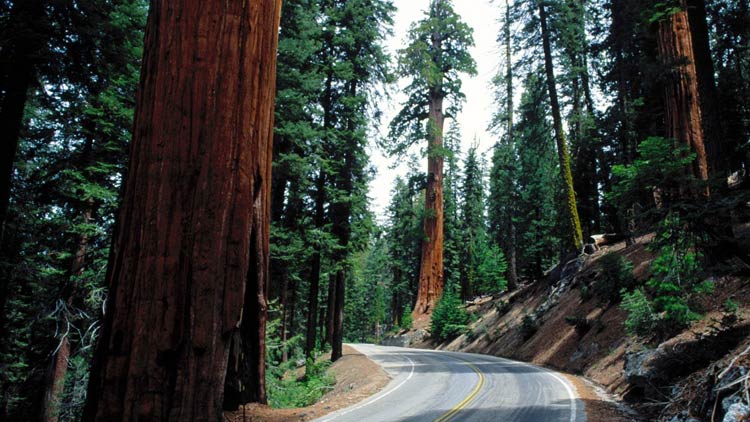
Rivers
Sequoia National Park is home to several notable rivers and streams, including:
- Kaweah River
The main river that runs through the park, and is known for its fishing, swimming, and rafting opportunities. - Middle Fork Kaweah River
A tributary of the Kaweah River that runs through the park’s Mineral King area, and is known for its fishing and backpacking opportunities. - Marble Fork of the Kaweah River
A tributary of the Kaweah River that runs through the park’s Lodgepole area, and is known for its fishing and swimming opportunities. - Tule River
A river that runs just outside the park, and is known for its fishing and swimming opportunities. - The East Fork of the Kaweah River
A tributary of the Kaweah River that runs through the park’s Giant Forest area, and is known for its fishing and swimming opportunities.
These rivers and streams are popular for fishing, swimming and rafting, with some of them requiring fishing permits and others are seasonal. They also offer opportunities for backpacking, camping, picnicking and hiking along their banks.

Caves
Sequoia National Park is home to several notable caves, including:
- Crystal Cave
A marble cave located in the park’s Giant Forest area, known for its beautiful formations of crystals and other minerals. Guided tours are available from late May to early November. - Boyden Cave
A limestone cave located in the park’s Mineral King area, known for its underground stream and flowstone formations. Guided tours are available from late May to early November. - Moaning Cavern
A limestone cave located outside the park, but is part of the park’s cave system and it is known for its large chamber and underground lake. Guided tours are available year-round.
These caves are formed by the action of water on the limestone rock over millions of years and offer an interesting underground adventure. Some of them are accessible via guided tours, while others are closed to the public. They offer unique and spectacular underground formations, such as stalactites, stalagmites, and flowstone.
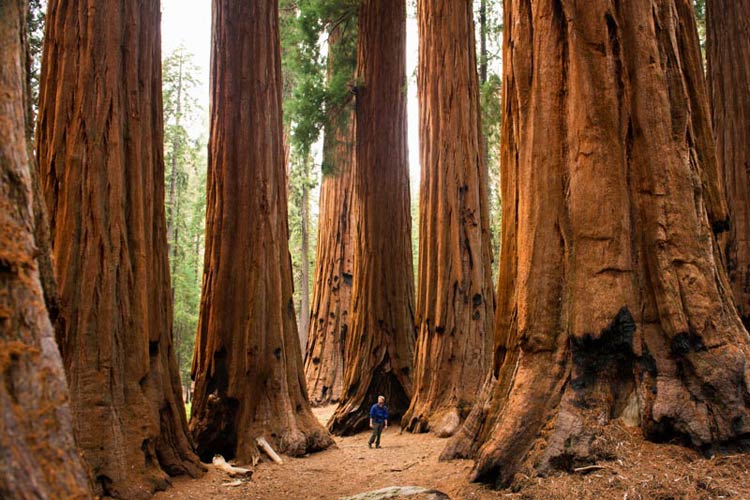
Forests and trees
Sequoia National Park is home to several notable forests and trees, including:
- Giant Forest
A grove of giant sequoias located in the park’s northern region, known for its large and ancient trees, as well as its hiking trails and educational programs. This is the largest grove of giant sequoias in the park, and it contains several of the largest and oldest trees on earth, including the General Sherman Tree, which is considered the largest living single stem tree on earth by volume. - Lodgepole Pine Forest
A forest located in the park’s central region, known for its Lodgepole Pine Trees, which is a type of coniferous tree that is able to grow in different types of soil and climates. - Redwood Mountain Grove
A grove of giant sequoias located in the park’s southern region, known for its large and ancient trees, as well as its hiking trails and educational programs. - High Sierra
This region of the park is home to a variety of coniferous trees, including Jeffrey Pine, White Fir, Lodgepole Pine, and Red Fir.
These forests are known for their beauty, ecological importance, and recreational opportunities. They are home to a variety of plant and animal species and offer opportunities for hiking, camping, picnicking and backpacking. The giant sequoias are the main attraction, and they can only be found in a few places in the world, and are known for their size, age and resilience.
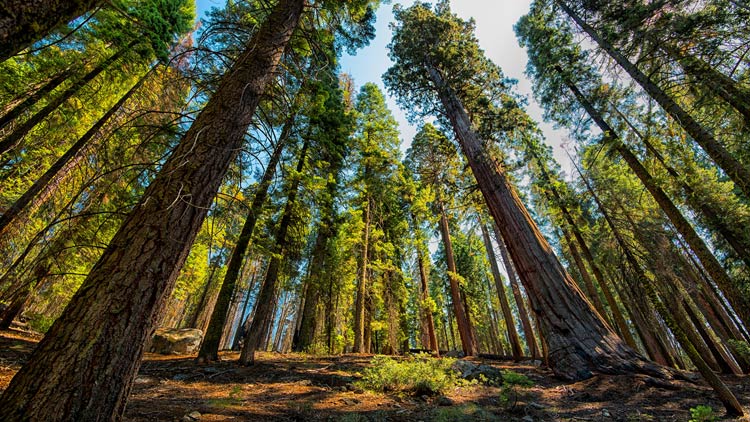
Climate
The climate in Sequoia National Park is characterized by hot, dry summers and mild, wet winters. The park experiences a Mediterranean-like climate, with most of the precipitation falling in the form of snow during the winter months.
- During the summer months, temperatures can reach up to 100°F (38°C) in the foothills and up to 90°F (32°C) in the high Sierra. The park’s high elevation, combined with low humidity, makes for comfortable summer temperatures.
- During the winter months, temperatures can drop below freezing and heavy snowfall is common in the high Sierra. The park’s high elevation also means that it can be much colder than the surrounding areas.
- The park’s weather is subject to sudden changes, and visitors should be prepared for extreme heat and cold, as well as sudden storms. The park’s high elevations mean that the weather is unpredictable, and visitors should be prepared for any type of weather.
- The park receives an average annual precipitation of around 20 inches (50 cm) in the foothills, and up to 60 inches (150 cm) in the high Sierra. This precipitation falls mostly as snow during the winter months, and it is responsible for the park’s lush meadows and rivers. The park’s high elevations also mean that the snowfall is much heavier than in the surrounding areas.
The park’s Mediterranean-like climate makes it a great destination for outdoor activities throughout the year, but visitors should be prepared for the different weather conditions, especially when planning to hike or camp in the backcountry.

Flora in Sequoia National Park
Sequoia National Park is home to a diverse array of plant life, including over 1,500 species of vascular plants and over 1,000 species of non-vascular plants. The park is located in the transition zone between the California Floristic Province and the Great Basin Floristic Province, which results in a high level of biodiversity.
The park’s foothills region is characterized by its oak woodlands, chaparral vegetation, and groves of giant sequoias. The giant sequoias, also known as Sierra redwoods, are the largest trees in the world by volume and can live for over 3,000 years. The Giant Forest and Redwood Mountain Grove are two of the largest groves of giant sequoias in the park.
The high Sierra region is characterized by its alpine meadows and subalpine forests. This area is home to a wide variety of wildflowers, including lupines, shooting stars, and paintbrush. The park’s high elevations also provide a habitat for several species of wildflowers that are not found at lower elevations.
The park’s Lodgepole Pine Forest, which is located in the park’s central region, is characterized by its dense forest of Lodgepole Pine Trees. The Lodgepole Pine Forest is a unique ecosystem that is adapted to the park’s high elevation and cold temperatures.
The park’s rivers and streams are lined with willows, cottonwoods, and alders, which provide a habitat for a wide variety of wildlife. The park’s caves are also home to a wide variety of cave-dwelling life, including bats, salamanders, and insects.
Overall, the park’s flora is diverse and changes with the altitude, and visitors can find a wide variety of wildflowers, trees, and plants throughout the park, depending on the time of the year and elevation.

Fauna in Sequoia National Park
Sequoia National Park is home to a diverse array of wildlife, including over 200 species of birds, 60 species of mammals, and 20 species of reptiles and amphibians. The park’s high elevations, varied habitats, and location in the transition zone between the Sierra Nevada and the Great Basin make it a unique and important area for wildlife.
The park’s forests, meadows, and rivers provide a habitat for a wide variety of mammals, including black bears, mountain lions, mule deer, bobcats, and coyotes. The park’s high Sierra region is also home to several species of small mammals, such as the American marten and the Sierra Nevada red fox.
The park’s rivers and streams are home to several species of fish, including rainbow trout and the endangered Kern River rainbow trout. The park’s high Sierra region is also home to several species of amphibians, such as the mountain yellow-legged frog and the Yosemite toad.
The park’s forests and meadows provide a habitat for a wide variety of birds, including the American dipper, the mountain bluebird, and the Williamson’s sapsucker. The park’s high Sierra region is also home to several species of birds of prey, such as the golden eagle and the peregrine falcon.
The park’s caves provide a habitat for several species of bats, including the Townsend’s big-eared bat, the western small-footed bat, and the Yuma myotis.
Overall, the park’s fauna is diverse and changes with the altitude, and visitors can find a wide variety of wildlife throughout the park, depending on the time of the year and elevation. It’s important to remember that while these animals are fascinating to observe, they are wild and should be respected as such. Visitors should always keep a safe distance and follow park regulations to protect the wildlife and their own safety.

Main Sequoia National Park attractions
There are many popular attractions in Sequoia National Park, including:
- The Giant Forest
This is the largest grove of giant sequoias in the park and is home to some of the largest trees in the world. Visitors can take a hike on the Congress Trail, which allows them to see many of the park’s largest sequoias up close. - The General Sherman Tree
This is the largest tree in the world by volume and is located in the Giant Forest. Visitors can take a short walk to see the tree up close. - Moro Rock
This granite dome offers a great view of the park and the surrounding Sierra Nevada mountain range. Visitors can take a strenuous hike to the top of the rock. - Tunnel Log
This is a fallen giant sequoia that has had a tunnel carved through it. Visitors can drive through the tunnel and see the inside of the tree. - Crystal Cave
This limestone cave is one of the most popular attractions in the park and offers a unique underground experience. Visitors can take a guided tour of the cave to see its unique formations. - The High Sierra Trail
This scenic trail offers visitors a chance to experience the park’s high Sierra region and offers a great view of the Great Western Divide. - The General Grant Tree
This giant sequoia is the second-largest tree in the world by volume and is located in the Grant Grove. - The Big Trees Trail
This easy trail is a great place to see giant sequoias and learn about the park’s history and ecology. - The Congress Trail: This is a 2-mile loop trail that takes visitors through the Giant Forest and passes by many of the park’s largest sequoias.
- The Tokopah Falls Trail
This is a moderate hike that takes visitors to the base of Tokopah Falls, one of the park’s most popular waterfalls.
These are some of the main attractions, but there are many other trails, scenic drives, and overlooks in the park that offer visitors a chance to experience the park’s natural beauty and diversity.
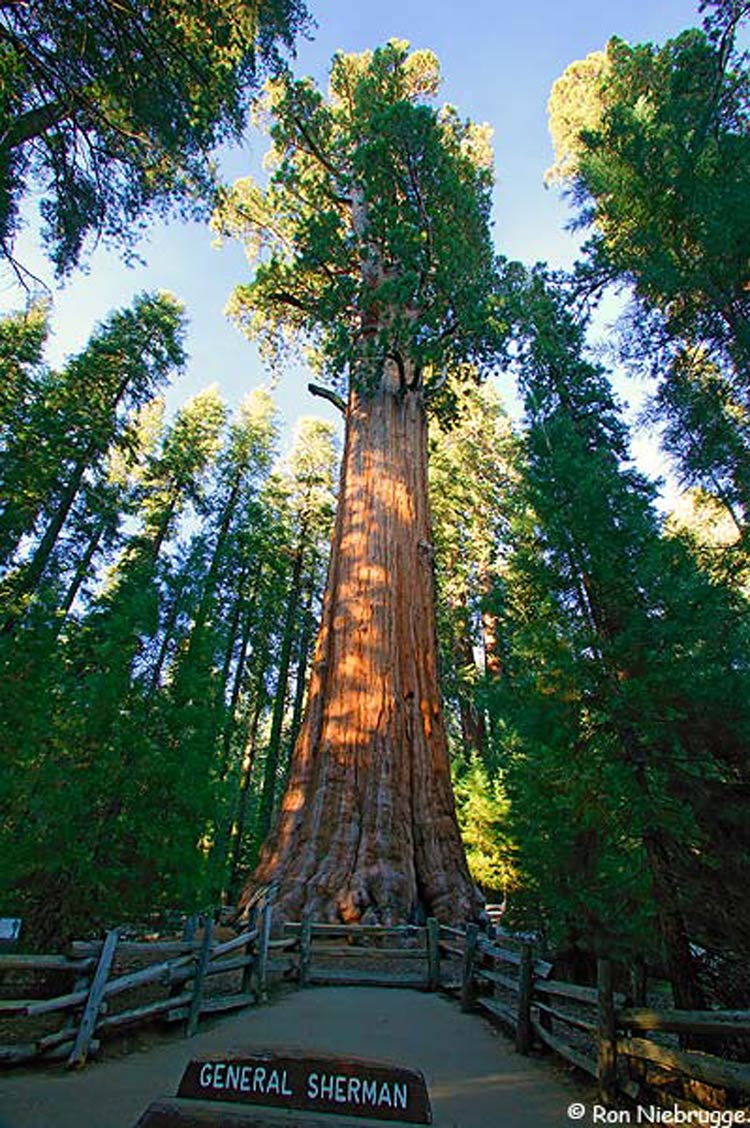
General Sherman tree
The General Sherman Tree is the largest tree in the world by volume. It is a giant sequoia tree located in the Giant Forest of Sequoia National Park, California, United States. The tree is about 275 feet (84 m) tall, and its trunk is over 36 feet (11 m) in diameter at the base. The tree’s total volume is estimated to be over 52,500 cubic feet (1,487 m3) of wood.
The General Sherman Tree is estimated to be between 2,200 and 2,700 years old. It is named after William Tecumseh Sherman, a Union general during the American Civil War. The tree was named in 1879 by naturalist James Wolverton, who had served under General Sherman during the Civil War.
The tree is easily accessible to visitors, as it is located on a short, half-mile trail from the parking lot. Visitors can walk around the tree and admire its massive size and grandeur. Near the tree, there are signs that provide information about the tree’s size and age.
The General Sherman Tree is not the tallest or widest tree, but it is the largest living tree on earth by volume, and it is a symbol of the park’s natural beauty and ecological importance.
It’s important to note that the tree is protected by park regulations and visitors are not allowed to climb or damage it in any way. The tree is also protected from fire and pests by the park’s natural resource staff.
General Sherman tree – detail information
| Height above base | 274.9 ft | 83.8 m |
| Circumference at ground | 102.6 ft | 31.3 m |
| Maximum diameter at base | 36.5 ft | 11.1 m |
| Diameter 4.50 ft (1.37 m) above height point on ground | 25.1 ft | 7.7 m |
| Girth Diameter 60 ft (18 m) above base | 17.5 ft | 5.3 m |
| Diameter 180 ft (55 m) above base | 14.0 ft | 4.3 m |
| Diameter of largest branch | 6.8 ft | 2.1 m |
| Height of first large branch above the base | 130.0 ft | 39.6 m |
| Average crown spread | 106.5 ft | 32.5 m |
| Estimated bole volume | 52,508 cu ft | 1,487 m3 |
| Estimated mass (wet) (1938) | 2,105 short tons | 1,910 t |
| Estimated bole mass (1938) | 2,472,000 lb | 1,121 t |

Trails in the park
Sequoia National Park offers a wide variety of trails for visitors to explore. Some of the most popular trails include:
- The Congress Trail
This is a 2-mile loop trail that takes visitors through the Giant Forest and passes by many of the park’s largest sequoias, including the General Sherman Tree. - The High Sierra Trail
This trail is a 42-mile hike that takes visitors through the park’s high Sierra region and offers a great view of the Great Western Divide. - The Big Trees Trail
This easy trail is a great place to see giant sequoias and learn about the park’s history and ecology. - The Tokopah Falls Trail: This is a moderate hike that takes visitors to the base of Tokopah Falls, one of the park’s most popular waterfalls.
- The Moro Rock Trail
This granite dome trail offers a great view of the park and the surrounding Sierra Nevada mountain range. - The General Grant Tree Trail
This is a short trail that takes visitors to see the General Grant Tree, the second-largest tree in the world by volume. - The Crescent Meadow Trail
This trail takes visitors through a beautiful meadow and offers a great view of the park’s flora and fauna. - The Twin Lakes Trail
This trail takes visitors to two beautiful alpine lakes, where they can fish, swim or enjoy the scenery. - The Alta Peak Trail
This strenuous trail takes visitors to the summit of Alta Peak, where they can enjoy panoramic views of the park and the surrounding Sierra Nevada mountain range. - The Pear Lake Trail
This trail takes visitors to Pear Lake, a beautiful alpine lake surrounded by granite cliffs.
These trails offer visitors a chance to experience the park’s natural beauty and diversity, from the giant sequoias of the Giant Forest to the high Sierra region, there is a trail for every level of hiker.
It’s important to note that some of the trails can be strenuous and visitors should be prepared for the hike by bringing enough water, food and appropriate clothing and footwear. Visitors should also check with park rangers for trail conditions, permits, and any potential closures before setting out.
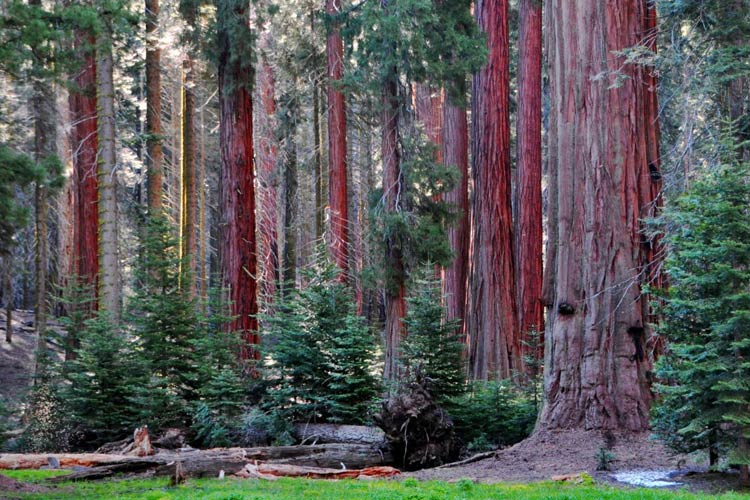
How To Reach To Sequoia National Park?
Sequoia National Park can be reached by several modes of transportation:
- By Car
The park is located approximately 45 miles (72 km) east of Visalia, California, and can be reached via Highway 198. The park has several entrances, including the Ash Mountain Entrance and the Big Stump Entrance. - By Plane
The nearest major airport is Fresno Yosemite International Airport, which is approximately 65 miles (104 km) away from the park. - By Bus
A bus service called the Sequoia Shuttle operates from Visalia to Sequoia National Park from June to September. - By Train
The nearest Amtrak station is located in Hanford, California, which is approximately 40 miles (64 km) from the park.
Once in the park, visitors can take a scenic drive along the Generals Highway to reach various destinations within the park, or take a park shuttle during the summer months. The park also has several hiking trails and campgrounds available for those who want to stay overnight.
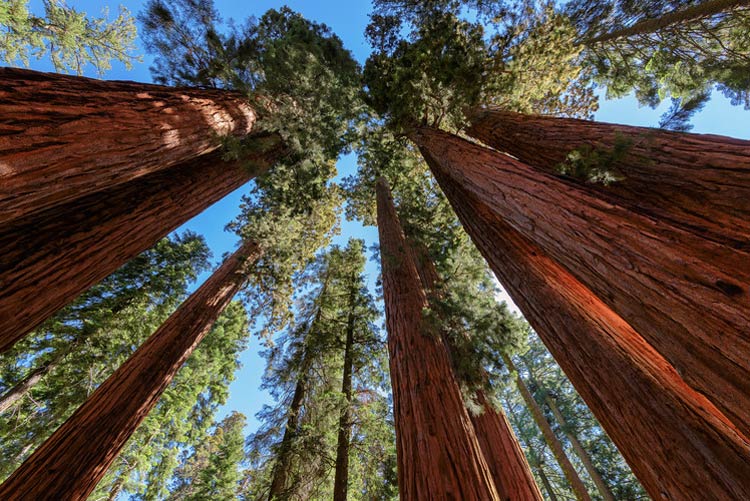
Best Time To Visit Sequoia National Park
The best time to visit Sequoia National Park depends on what you would like to experience during your visit. The park is open year-round, but certain activities and facilities may have seasonal hours and availability.
- Summer (June to September)
Summer is the busiest season in the park and is ideal for hiking, camping, and enjoying scenic drives. However, be prepared for higher temperatures and larger crowds. - Spring (April to May)
Spring is a great time to visit the park as the wildflowers are in bloom and the weather is mild. - Fall (October to November)
Fall is a beautiful time to visit the park as the leaves on the trees change colors. The weather is mild and the crowds are smaller than in the summer months. - Winter (December to March)
Winter is a quieter time to visit the park and is ideal for cross-country skiing and snowshoeing. However, snow and ice can make some roads and trails impassable, so be prepared for winter conditions.
Regardless of when you visit, it’s always a good idea to check the park’s website for the latest information on conditions, closures, and seasonal hours of operation.

Conservation
Conservation is a priority at Sequoia National Park. The park works to protect and preserve its unique natural resources and ecosystems, including the ancient sequoia trees, wildlife, and scenic beauty. Some of the conservation efforts in the park include:
- Habitat protection
The park is home to a variety of wildlife species and efforts are made to protect their habitats and maintain a healthy balance of different species within the park. - Fire management
Fire is an important natural process in the park’s ecosystem, but uncontrolled fires can cause significant damage. The park uses a combination of controlled burns and fire suppression techniques to protect the park’s resources and visitors. - Invasive species management
Invasive species can have a negative impact on the park’s ecosystem, and the park works to prevent the spread of invasive species and promote the growth of native plant species. - Water management: The park’s streams, rivers, and other water sources are essential to its ecosystem and are protected through water management efforts to maintain water quality and reduce the impact of human activities on the park’s water resources.
- Climate change
The park is also working to address the impacts of climate change, including monitoring the effects on the park’s resources and developing strategies to protect and conserve them for future generations.
Overall, the park is committed to preserving its natural resources and ecosystems, and visitors play an important role in helping to conserve the park by following park rules and regulations and minimizing their impact on the park’s resources.

Sequoia National Park in numbers
Here are some key numbers that provide a snapshot of Sequoia National Park:
- Size
The park covers an area of 404,063 acres (164,171 hectares) - Elevation
The park’s lowest elevation is at 1,370 ft (418 m) and the highest elevation is at 14,494 ft (4,416 m) - Visitation
Approximately 1.4 million people visit Sequoia National Park each year - Trees
The park is home to some of the largest trees in the world, including the General Sherman tree, which is estimated to be 2,200-2,700 years old and is the largest living tree by volume, measuring 274.9 ft (83.8 m) in height and 36.5 ft (11.1 m) in diameter at breast height. - Wildlife
The park is home to a diverse array of wildlife species, including black bears, mountain lions, deer, and coyotes, among others. - Camping
The park has 13 campgrounds with a total of over 700 campsites - Hiking trails
The park has over 240 miles (386 km) of hiking trails - Scenic drives
The park has several scenic drives, including the Generals Highway and the Mineral King Road.
These numbers provide a glimpse into the size and diversity of Sequoia National Park, which is a unique and awe-inspiring destination for millions of visitors each year.

Interesting facts about Sequoia National Park
- Sequoia National Park is home to some of the largest living organisms on earth, with several of the park’s giant sequoia trees measuring over 300 feet tall and 30 feet in diameter.
- The park is also home to the highest peak in the contiguous United States, Mount Whitney, which stands at 14,505 feet above sea level.
- The park’s underground cave system, Crystal Cave, is home to unique and delicate formations such as helictites, aragonite, and anthodites.
- The park is a haven for wildlife, with over 200 species of birds, 60 species of mammals and many reptiles and amphibians.
- The park’s giant sequoia trees are not only the largest living organism on earth but also among the oldest, some of them are over 3,000 years old.
- The park is also home to the largest tree in the world by volume, the General Sherman Tree, which has a volume of over 52,500 cubic feet.
- The park also contains the highest concentration of endangered Sierra Nevada bighorn sheep in the world.
- The park was established in 1890 as the second national park in the United States, after Yellowstone.
- The park is home to the largest grove of giant sequoias in the world, the Giant Forest, which contains over 8,000 giant sequoia trees.
- The park’s unique geology is a result of millions of years of tectonic activity and erosion, and it contains some of the oldest exposed granite in the world.
- The park is also home to the largest living organism on earth, the General Sherman Tree, which is estimated to be over 2,300 years old.
- The park’s underground cave system, Crystal Cave, is home to unique and delicate formations such as helictites, aragonite, and anthodites.
- The park’s giant sequoia trees are not only the largest living organism on earth but also among the oldest, some of them are over 3,000 years old.
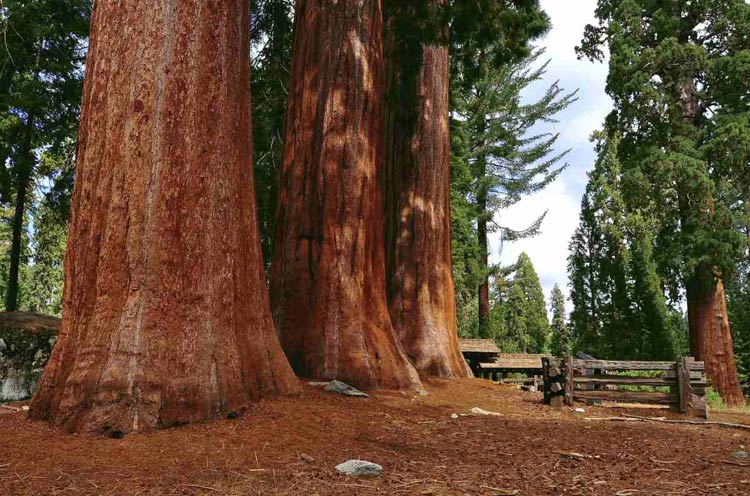
Q&A (questions and answers) about Sequoia National Park
Q: Where is Sequoia National Park located?
A: Sequoia National Park is located in the southern Sierra Nevada mountains in central California, USA.
Q: What is the main attraction of Sequoia National Park?
A: The main attraction of Sequoia National Park is the giant sequoia trees, which are some of the largest living organisms on earth.
Q: How old are the giant sequoia trees in Sequoia National Park?
A: Some of the giant sequoia trees in Sequoia National Park are over 3,000 years old.
Q: What are some of the other natural features of Sequoia National Park?
A: Some of the other natural features of Sequoia National Park include Mount Whitney, Crystal Cave, the Giant Forest, and the Sierra Nevada bighorn sheep.
Q: What is the highest peak in the contiguous United States?
A: The highest peak in the contiguous United States is Mount Whitney, which is located in Sequoia National Park and stands at 14,505 feet above sea level.
Q: What kind of wildlife can be found in Sequoia National Park?
A: Over 200 species of birds, 60 species of mammals, and many reptiles and amphibians can be found in Sequoia National Park.
Q: What is the largest tree in the world by volume?
A: The largest tree in the world by volume is the General Sherman Tree, which is located in Sequoia National Park and has a volume of over 52,500 cubic feet.
Q: How was Sequoia National Park established?
A: Sequoia National Park was established in 1890 as the second national park in the United States, after Yellowstone.
Q: Are there any underground caves in Sequoia National Park?
A: Yes, there is an underground cave system in Sequoia National Park called Crystal Cave, which is home to unique and delicate formations such as helictites, aragonite, and anthodites.
Q: Are there any hiking trails in Sequoia National Park?
A: Yes, there are many hiking trails in Sequoia National Park, ranging from easy nature walks to strenuous backcountry trails.


